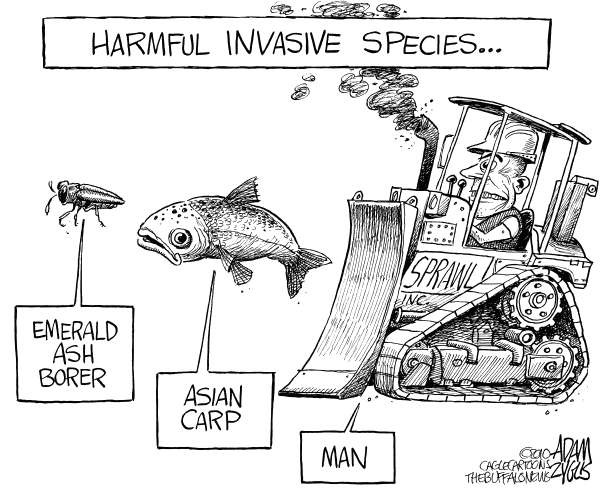This essay was written by Joe Guzzardi.
 Los Angeles County, the Nation’s most populated with more than 10 million residents, is in an emergency state, per Governor Jerry Brown’s declaration. The largest inferno in Los Angeles’ history has forced hundreds from their homes.
Los Angeles County, the Nation’s most populated with more than 10 million residents, is in an emergency state, per Governor Jerry Brown’s declaration. The largest inferno in Los Angeles’ history has forced hundreds from their homes.
Little more than two months ago in Northern California, wildfires destroyed houses and sent people fleeing for safety. Urban sprawl created housing developments in remote, difficult-to-access regions that stalled rescue crews’ arrivals.
Northern California was once a haven for Los Angeles denizens, looking to live in a place where they could breathe fresh air and put traffic nightmares behind them. But five Northern California counties are among the State’s fastest growing: Alameda, Contra Costa, Fresno, Sacramento, and Santa Clara. As the population increases, more homes are built in the outskirts, and sprawl expands. When tragedy strikes, rescue crews face difficulty accessing imperiled neighborhoods on the outskirts.
In Houston, similar sprawl-related challenges impeded rescue missions, after Hurricane Harvey. Billy Fleming, a Cty Planning Ph.D. and University of Pennsylvania School of Design Research Director, blames the Houston disaster not on an unforeseeable Act of God, but instead on policymakers’ determination to build a megalopolis on a slowly submerging swamp.
Cheap developments built atop of those swamps helped make the City the Nation’s fourth-largest. Between 1995 and 2015, the Greater Houston area experienced a 42 percent population growth ,as urbanization overwhelmed 25,000 acres of swampland and grassy meadows, according to Texas A&M University research.
Reporting in the British daily The Guardian, Fleming wrote that Houston’s bogs and wetlands, which once served as natural flood protection for the City, have been replaced with strip malls and suburban tract homes. For years, City planners ignored Texas A&M’s Samuel Brody, Director of the Center for Texas Beaches and Shores[. He] predicted that disaster was inevitable. Earlier tropical storm-related deaths were, inexplicably, insufficient cause to prompt local officials or residents to approve stricter zoning. In May 2015 eight perished, and 17 lives were lost in April 2016. Yet on three occasions residents voted down urban planning code proposals.
Fleming warns that nothing is likely to change, as long as the failed George P. Bush remains the Texas Land Commissioner. Bush is the son of former Florida Governor Jeb Bush…. Although he has no obvious credentials to do so, [Bush] is empowered to plan, engineer, and manage the Texas coastline.
Between the California and Houston tragedies, dozens of lives were lost, and thousands of homes destroyed. A new round of California wildfires could begin this week. In San Francisco, traditionally known for its cold and foggy summers, at the start of September temperatures hit 106º.
The future for California and Texas is frightening. By 2050, California’s population will increase from today’s nearly 40 million to more than 50 million, a 25 percent rise. Texas, according to the Census Bureau, has five of the Nation’s fastest growing cities with no slowdown in sight…. Houston is poised to overtake Chicago, IL, as the third-largest metropolis in the U. S.
Build, baby, build!
Although it’s heresy to say in politically correct quarters, the time to reconsider the folly of adding one million new legal immigrant residents annually–all future home owners or renters–is past due, and urgent.
